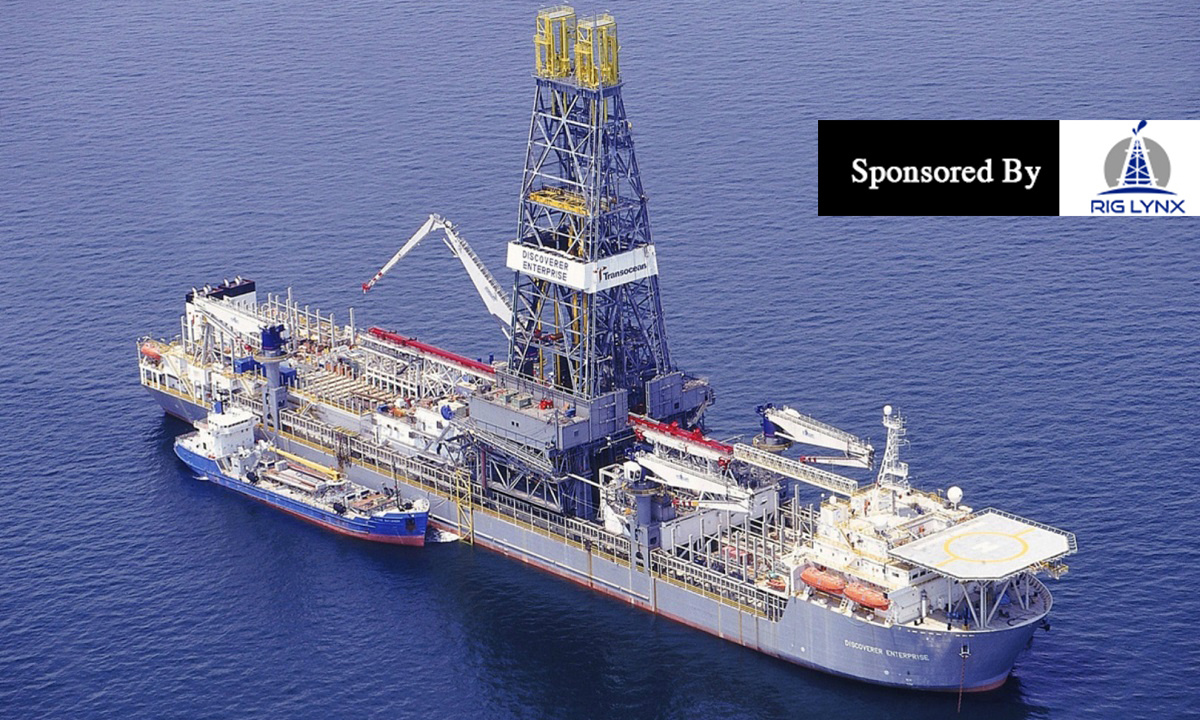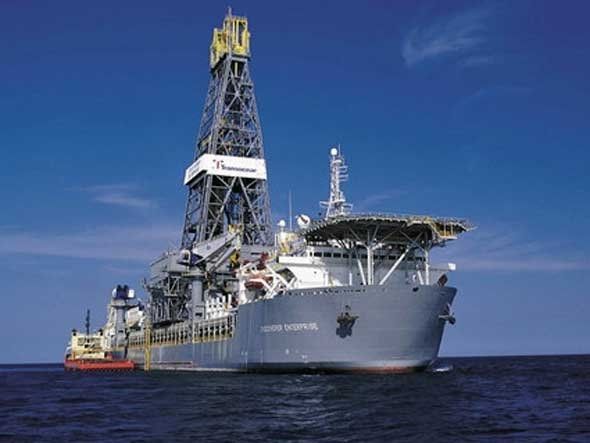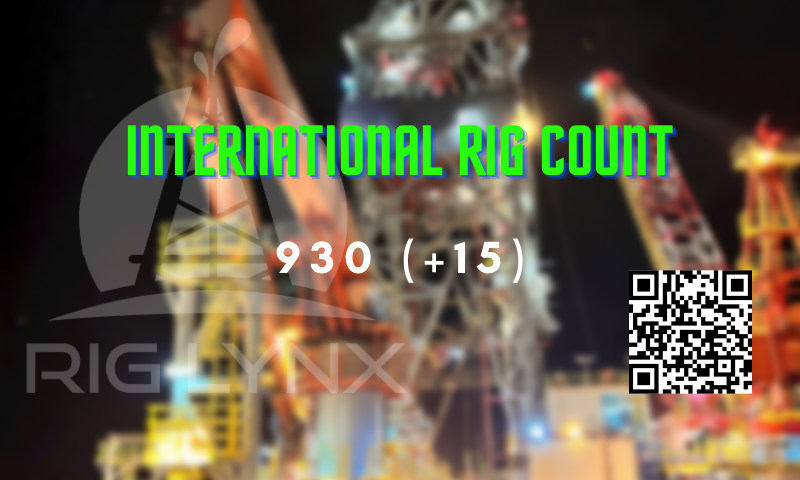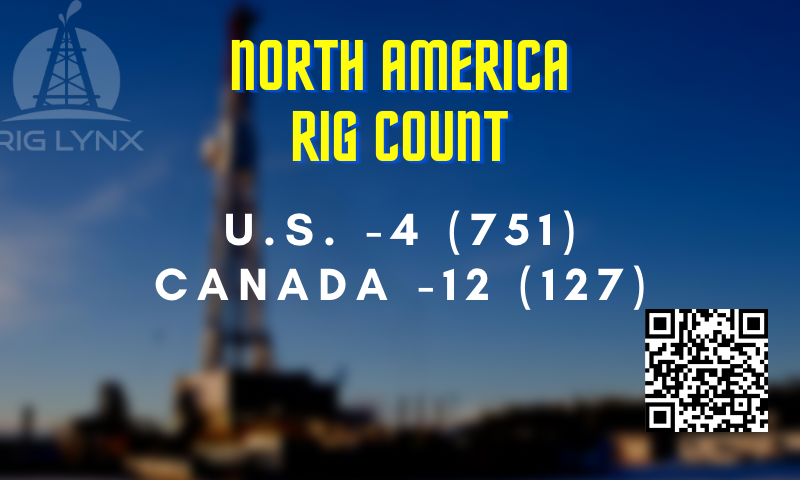
As we see all of the recent reports of drilling activities picking up in selected basins, the deepwater contractors are still huddled around the table, at the end of each quarter, with their red pens out making cuts, even 4 years later, they are still not seeing the light at the end of the tunnel.
This is mainly due to two reasons:
- Market oversupply of vessel specification
- Available opportunities
The first is the hefty one, the second is standard market recovery muddle but for all deepwater contractors the first bullet point sticks hard because of technical specifications of a technology that began 23 years ago called “Dual Activityâ€.
Here are the specifications of the world’s first dual activity rig
The Discoverer Enterprise of Transocean is the first ultra- deepwater drillship with dual activity drilling technology, which aims to reduce the cost of an ultra deepwater development project by up to 40 percent.
This massive, multi-purpose vessel can work in the deepest waters being explored in the world today. It can drill, test and complete wells in water depths of up to 10,000 feet – almost two miles. At 835 feet, the Discoverer Enterprise is almost as long as three U.S. football fields, and it can drill a well more than 6.5 miles beneath its drill floor.
More important, Transocean’s patented dual-activity drilling technology has the unique capability to conduct drilling operations simultaneously, rather than sequentially in series. Two full-capability, full-capacity drilling stations – in actuality two separate drilling rigs — carry out these parallel operations under a single, massive derrick. Two full-sized rotary tables are designed into a drill floor more than twice as large as a conventional one.
An innovative and automated pipe-handling system allows full integration of the two rigs. Each rig can run, pull and stand back 135-foot-long stands of pipe, compared with the 93-foot stands typically used by drillers. As a result, 45% more pipe can be racked and 30% fewer pipe connections have to be made or “broken.â€
The Discoverer Enterprise also can conduct a wide range of subsea operations, including j-laying of ultra-deepwater pipelines, even during well-construction. What’s more, the vessel has extended well-testing and storage capabilities.
To ensure stability offshore, even during a hurricane, the vessel’s six, 7,000 horsepower thrusters are controlled by a triple redundant, dynamic positioning system.
The Discoverer Enterprise represents a technical breakthrough for the offshore drilling industry. The vessel’s unique drilling methodology is capable of significatly altering the process and subsequently the cost of drilling deepwater wells.
From the top of its twin derricks to the bottom of the deepest waters being explored for oil and gas, the Discoverer Enterprise is yet another reason why there is only one leader in deepwater drilling: Transocean.
In Perspective – Facts about Discoverer Enterprise
- The 835-foot-long rig is nearly as long as three U.S. football fields.
- The rig’s height of 418 feet exceeds one U.S. football field.
- Constructed with more than 75 million pounds of steel and other materials — equal to the weight of more than 1,300 empty flatbed railcars — the rig displaces over 220 million pounds, or 103,000 metric tons.
- The rig is capable of generating almost 40 megawatts of power, enough electricity for 40,000 homes.
- The rig can drill a well 35,000 feet below sea level, or more than 6.5 miles from the drill floor.
- About 1,600 miles of cable and wiring run throughout the Discoverer Enterprise, the approximate distance from Houston, Texas, to New York City, USA.
- Living quarters can accommodate up to 200 people.
The above can be found on web archives[i]
After the above rig specifications there is no doubt that the Discoverer Enterprise was set out to be a groundbreaking adventure for Transocean and BP. During this same time the Enterprise had to sister vessels that were being built, the Discoverer Spirit and the Discoverer Deep Seas. The Spirit would enter the market working for then Spirit Energy/Unocal and the Deep Seas would enter the market working for Chevron.
Now about the history…
The dual-activity drilling concept was born in the fall of 1995. Transocean Sedco Forex engineers and operations personnel envisioned a rig with 2 complete drilling systems, including separate drawworks, top drives and pipehandling systems. It would allow drilling to be conducted while running equipment at the same time rather than sequentially, creating a more efficient operation.
“We set out to develop a concept that would allow for simultaneous operations, reduce the critical path and save money for the operator, and that’s what we’re doing,†said Steve Woelfel, Drilling Engineer for the Discoverer Enterprise.
“Dual activity has driven a step change in drilling operations.â€

From December 1999 to January of this year, Transocean Sedco Forex estimates that Enterprise performance has resulted in productive time savings of 32 days on four BP projects, including an impressive 40% time savings on batch work and the achievement of a Gulf of Mexico drilling depth record.
“Considering that operators make more money the faster fields are brought on line, the dual-activity process is receiving a lot of attention,†Mr Woelfel points out.
“I am very pleased and excited with the (time-saving) performance,†said Curtis Jackson, Wells Manager, Drilling and Completions for BP’s Deepwater Production Business Unit in the Gulf of Mexico. “What has surprised me is we have yet to realize the full potential of this vessel. BP and TSF are learning more every day about how we can take advantage of this potential.â€[ii]
Why is the above significant to the first bullet point as we mentioned prior?
As the market demand grew for technically superior machines to work in depths of 10’000 feet or more, so did the investment, as the world was seeing deepwater as one of the last true “frontiers†of the market at that time, of course later on we have seen that the fracking technology has altered some of this perception but for many years these technically superior machines dominated the market.
This created enthusiasm and interest with every major operator on the face of the planet and when we say all of them, we mean “all†of them. In turn this created a backlog requirement for technically superior vessels, which in turn ushered in a new era of shipbuilding in places such as Korea, Singapore, China and the list goes on and on. The delivery of these vessels were averaging as high as 6-8 vessels per year. When these vessels started entering the market, a barrel of oil was around $38 US[iii] much less than what the market is looking at today which is around $69 US[iv] but the difference in both of these scenarios where the long term investment that was taking place during 2000-2010, due to these technological breakthroughs with drilling and completions, we were able to fully envision a sustainable revenue monster post the multi-billion dollar investment with the simple term “first oilâ€. Now they could quantify the investment, now they could gain access to new funding around the world and now they could look past the “where will the money come fromâ€, now they could forecast new developments and projects all over the world.
Fast forward to the market crash, we saw these interests pull back as investments dwindled, interests changed to survival and we find 70% of these technologically advanced marvels sitting idle. As we regain confidence in other sectors, the deepwater market still lies very much dormant in survival mode because now, we have a fleet of assets that can explore, access and help you develop a field that is not as important as it was 15 years ago, an asset that is basically not needed. As these fields start to turn brown, we are reassessing the need for additional wells around the infrastructure to be able to inject some life into a dyeing asset but the activity forecast for this is very minimal, in fact for most parts of the world, the fields were designed to last for many years, some of the infrastructure in place are outliving their original life span and the investment has turned to cleaner, leaner expenditures which do not include “landing on the moon†anytime in the near future.
Now we have the 23rd birthday of Dual Activity, a technological marvel, the benchmark for all contract specific technical requirements now and we have a world full of them. Imagine driving into a parking lot and looking for a new car, the salesman walks out and shows you the latest model of cars, all kinds of colors, different makers but there are thousands of them to choose from, you will then want to negotiate price, why would you pay more for something there was so much of?
Written by Greg Williams, Rig Manager and Founder of Rig Lynx
[i] https://web.archive.org/web/20100614072738/https://www.deepwater.com/fw/main/Discoverer-Enterprise-141.html
[ii] https://www.drillingcontractor.org/dcpi/2001/dc-septoct01/s1-dualact.pdf
[iii] https://www.macrotrends.net/1369/crude-oil-price-history-chart
[iv] https://www.macrotrends.net/1369/crude-oil-price-history-chart
Check out our other current stories, we dare you…



